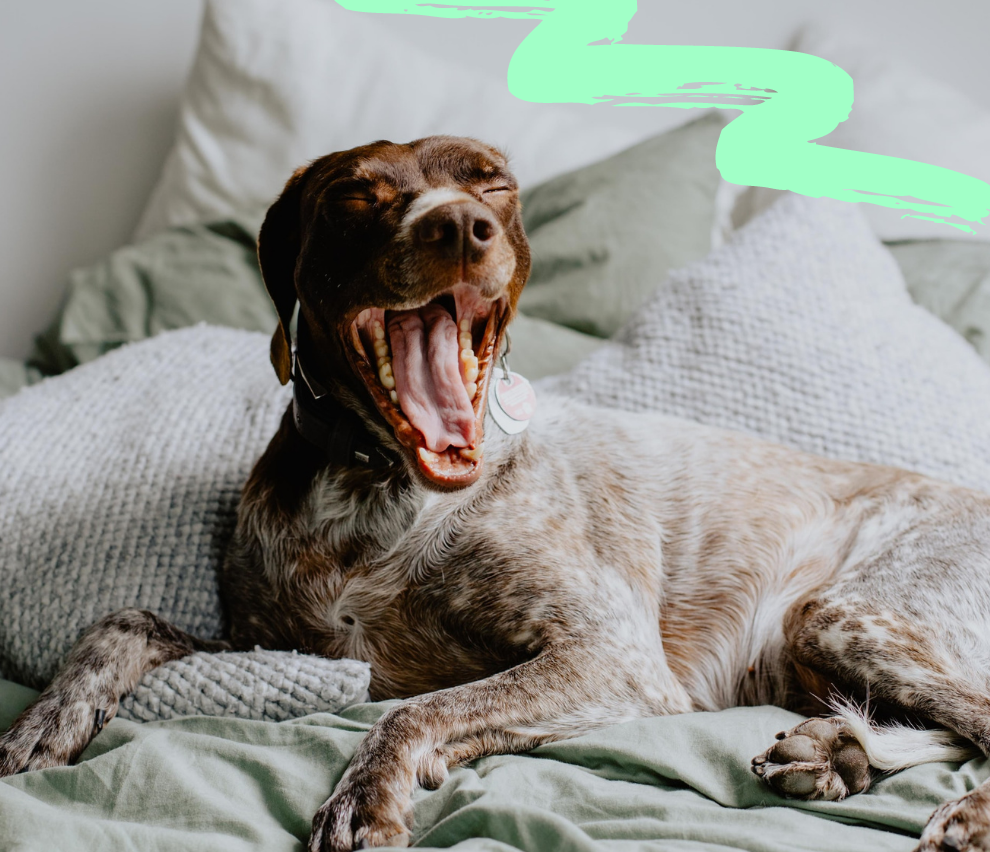Britain is a nation of pet lovers, with a whopping 57% of households owning a pet here in the UK in 2023, when records were last updated.
It probably won’t surprise any readers to learn that dogs are the most common pet on these shores; there are an estimated 13 million living in homes across the UK, and we’re second only to Germany in terms of dog ownership in Europe.
That number peaked during the pandemic (the number of dogs in the UK had hovered around 9 million for almost a decade before COVID struck), with households in the throes of lockdown desperate to add intrigue and companionship to those dull, dark days we all endured.
But as the newly-updated saying so sagely suggests, ‘’a dog is for life, not just for lockdown’’, and many first-time dog owners have discovered that the life of canine-companionship isn’t all walkies, playing fetch and snuggles. There’s also a whole lot of admin, cost, worry and stress associated with introducing a new dog to the family, and one of the areas where this is most apparent is in a new dog’s sleeping arrangements.
Since dogs are such keen creatures of habit, they often find it hard to adjust to a new home and those long nights spent in slumber somewhere unfamiliar. This can lead to restless nights both for dog and owner, but fortunately, there are things you can do to help. If your dog is a restless sleeper, here’s how to help them sleep more soundly.
Bedding Down In Comfort
You know the old proverb, that one should ‘’let sleeping dogs lie’’? Well, if your dog isn’t able to lie comfortably, then letting them sleep isn’t exactly going to be a breeze, is it?
And it can’t be overstated just how comfortably dogs love to lie. Whether it’s in a crate, on a specifically designed memory foam mattress or a high quality dog bed with a layer of faux fur for extra comfort, dogs just love to bed down in soft, padded spaces that boast ample room for stretching out, so ensure that you provide this. Sure, that high quality may come at a cost, but there are online dog bed sales regularly happening that will help cushion the blow, physically and metaphorically.
We can’t stress enough the importance of providing your dog with their own dedicated sleep space. Though it may be tempting to snuggle up with your pup in your own bed once in a while, this unpredictability of routine won’t help them sleep well.
Instead, give your dog their own space, as they love a level of ownership and privacy. If it’s feasible, dogs benefit from having a drop down cover on their sleeping area, which protects them from intrusive light and any draughts. Because there’s nothing a dog hates more than a fluctuating temperature. Speaking of which…

The Ideal Room Temperature For A Sleeping Dog
The difference between the ideal sleeping temperature for humans (between 16 and 18°C) and dogs (who prefer things a little warmer, at 23°C or so) presents a problem, as managing the temperature and keeping it consistent for all the household residents can be a fine juggling act.
Of course, that figure depends on the thickness of your dog’s coat, as well as their age and even your dog’s breed, but generally speaking, your dog’s sleeping quarters should be away from open windows and draughty areas of the house. Ideally, you’ll also provide them with a warm blanket, allowing your dog to regulate their temperature without them having to perform some doggy wizardry and reach up for the thermostat.
Some dog owners go further and provide a heated blanket for their pooch to sleep on, with some doggy beds coming with these built in. A raised bed can also help, as having a bed placed directly on the floor can mean the surface can get pretty cold and damp for sleeping dogs, particularly in winter.
You might even want to consider investing in doggy pyjamas for your pup, with the added bonus that these not only keep your dog warm, but they look super cute, too!Read: 8 considerations if you’re thinking about adopting a dog

A Bedtime Routine
Dogs may not be able to tell the time, but they instinctively know when it’s time for bed via that incredible doggy intuition they seem to possess.
And just as Pavlov discovered a way to make dog’s drool in anticipation of food simply by ringing a bell, so too can you help your pup feel more sleepy just by conditioning them to associate certain rituals with bed time.
Make sure that your dog’s bedtime routine follows a similar pattern each day, with their evening meal, pre-bed walk and bathroom break all falling at the same time each night.
Try to say goodnight to your dog in a similar way and at a predictable time each night, too, dimming the lights and not causing unnecessary commotion once you’ve made it clear that it’s bedtime for the both of you. They will soon learn to consistently feel tired and ready for bed by association, producing melatonin and regulating their sleep cycle, much in the same way humans do, in the process. All of this will result in a healthier, happier dog, which is what it’s all about, right?
Consider Their Polyphasic Sleep Cycle
We’re sure you already know this, but dogs follow a polyphasic sleep cycle, enjoying around 14 hours of sleep a day/night in total, in around four phases. It’s essential, then, to make sure your dog is getting enough exercise between those bouts of sleep, so they’re tired enough for a longer evening shift in the sack.
It’s recommended that dogs should be getting as much as two hours of exercise a day, and whilst this might seem a lot for you as much as them, there are ways you can make dog walking more enjoyable for the both of you.

Helping Your Dog Feel Safe & Secure
There are a couple of other minor adjustments you can make to your dog’s sleeping environment to ensure they feel safe and secure when they’re bedding down.
Firstly, consider playing white noise, such as rainfall, birdsong, or television static, or investing in a white noise machine, to soothe your dog. Some studies have even suggested that white noise can help relieve stress in dogs, especially when considering separation anxiety.
Such gentle, predictable noise can also work by masking or muffling other sounds that might be causing your dog distress and disturbing their ability to sleep, such as car alarms, traffic noise, fireworks and storms.
You could also introduce a couple of new toys to your pup’s bedding area, which, over time, they will grow attached to and associate bedtime with. The best toys to bring about safe and secure association are so-called ‘comfort’ toys, such as soft stuffed toys, and even pillowcases, towels and old T-shirts, especially if they smell like you! Which, when you think about it for a moment, is so incredibly, unbelievably sweet.
Is someone cutting onions in here?
Next up, why not check out our roundup of the best dog-friendly hotels in the UK? Go on, you know you (and your dog) want to…




